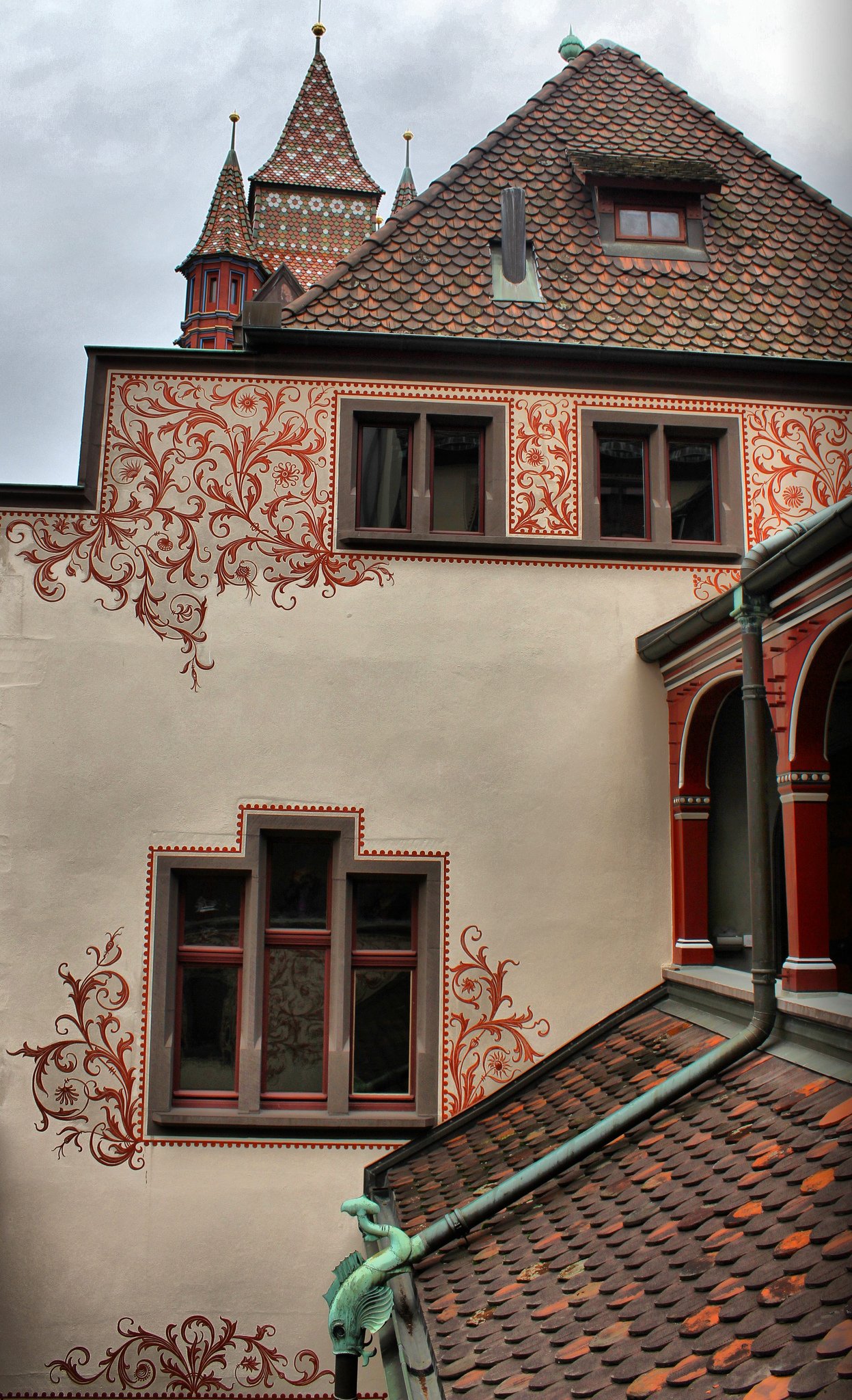#4831. Decorative Historical Facade with Painted Ornaments and Tiled Roof
Before us stands an exquisite example of historical architecture with a richly adorned facade. The building demonstrates a fine specimen of decorative art, where the cream-colored plaster serves as a canvas for intricate terracotta-colored ornaments. Floral motifs elegantly frame the windows, creating a visual rhythm throughout the facade.
Particular attention is drawn to the unusual pointed turrets with patterned tiles, showing the influence of medieval European architecture. The roof is covered with traditional terracotta tiles, creating a warm contrast against the cool gray sky. Notable are the original gutters with decorative elements in the form of fish or dragons made of patinated copper.
The window openings have non-standard forms – the upper windows are rectangular, while the lower window is designed as a triple block with a common framing, resembling a cross. This composition gives the facade architectural rhythm and visual interest. The red window frames echo the color of the decorative patterns, creating a cohesive color composition.
The combination of artistic painting with architectural elements, the richness of details, and the attention to ornamentation suggest the possible influence of Central European, perhaps Swiss or South German traditions in architecture, where decorative facades historically played an important role in the urban landscape.
